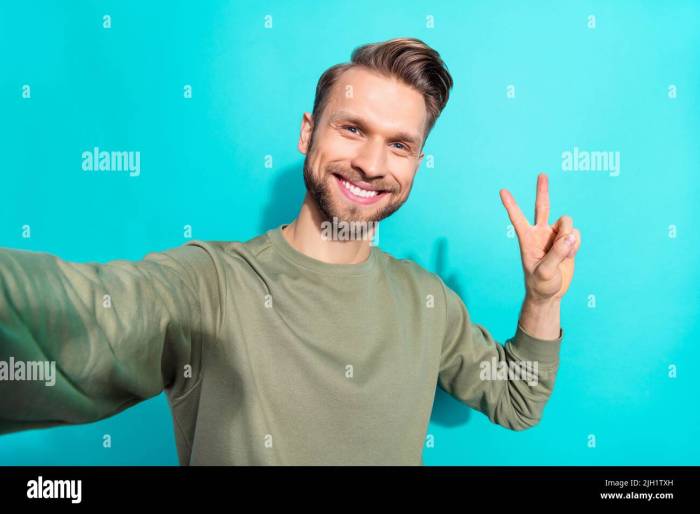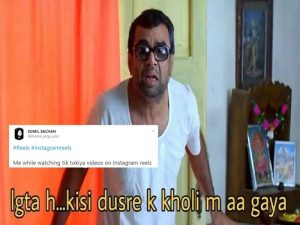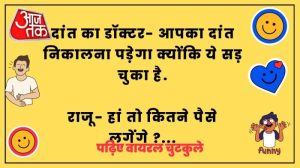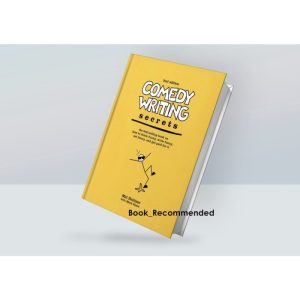
Ever wondered what makes a funny influencer
-actually* funny? It’s more than just silly faces and goofy voices! This exploration dives deep into the world of comedic content creators, revealing the strategies, challenges, and surprising societal impact behind their viral videos and meme-worthy moments. We’ll uncover the secrets of their success, from crafting killer content to building loyal audiences and securing lucrative brand deals.
Get ready for a laugh riot – and a serious dose of insightful analysis!
From the subtle art of observational humor to the explosive chaos of slapstick, we’ll dissect the various comedic styles that resonate with millions. We’ll analyze the platforms they dominate, the algorithms they navigate, and the ingenious ways they monetize their comedic genius. We’ll also explore the broader societal impact of humor, examining how funny influencers shape our culture and contribute to the ongoing conversation around social issues.
Buckle up for a rollercoaster ride through the hilarious world of online comedy!
Defining “Funny Influencers”
Funny influencers are individuals who leverage humor to build a following and engage their audience across various online platforms. Their success hinges on a potent blend of comedic talent, consistent content creation, and a strong understanding of their target audience’s preferences. Unlike traditional comedians, their stage is the digital world, demanding a unique approach to delivery and engagement.
Defining what constitutes a “funny influencer” requires looking beyond simple jokes. It’s about crafting a consistent comedic persona, understanding the nuances of different platforms, and building a community around shared laughter. The humor itself can range from subtle observational comedy to over-the-top slapstick, and even venture into the realm of dark humor, depending on the influencer’s style and target demographic.
Their ability to connect with viewers on an emotional level through laughter is key to their success.
Types of Humor Employed by Funny Influencers
Funny influencers employ a wide spectrum of comedic techniques to resonate with their audience. Observational humor, for example, finds the funny in everyday situations and relatable experiences, creating a sense of shared understanding. Slapstick comedy relies on physical humor and exaggerated movements, often appealing to a younger or more lighthearted audience. Dark humor, while potentially controversial, can be highly effective in creating a unique and memorable brand, particularly with audiences who appreciate a more cynical or edgy perspective.
Many successful influencers blend these styles to create a distinctive comedic voice. For instance, a food blogger might use observational humor to comment on the absurdities of grocery shopping, while incorporating slapstick elements in their cooking videos.
Comparison of Approaches Used by Successful Funny Influencers
Successful funny influencers often differ significantly in their approach to humor, yet share common threads. Some, like MrBeast, focus on grand-scale stunts and challenges, emphasizing spectacle and surprise. Others, such as @brittanybroski (TikTok’s “kombucha girl”), excel at relatable, short-form videos that tap into the absurdities of daily life. The key difference lies not just in the
- type* of humor, but in the
- delivery* and
- consistency*. MrBeast’s massive productions are meticulously planned, while Brittany Broski’s videos are often spontaneous and improvisational, yet both maintain a consistent brand identity and comedic style. Their success comes from understanding their platform and audience, and tailoring their humor accordingly.
Categorization System for Funny Influencers
A categorization system for funny influencers could be based on two primary axes: comedic style and target audience. Comedic style could include categories like Observational, Slapstick, Dark Humor, Absurdist, Satirical, and Self-deprecating. Target audience could be categorized by age (e.g., Gen Z, Millennials, Gen X), interests (e.g., gaming, beauty, cooking), and even preferred platforms (e.g., TikTok, YouTube, Instagram).
For example, a Gen Z influencer specializing in dark humor on TikTok would fall into a distinct category compared to a Millennial food blogger using observational humor on YouTube. This system allows for a more nuanced understanding of the diverse landscape of funny influencers and their unique approaches to comedic content creation.
Platforms and Reach of Funny Influencers

The world of funny influencers is a vibrant ecosystem, sprawling across various social media platforms, each with its own unique audience and engagement dynamics. Understanding these platforms and their impact on influencer reach is crucial for both aspiring comedians and brands looking to collaborate. This section will explore the dominant platforms, showcase successful examples, and analyze the influence of algorithms on visibility.
Popular Platforms for Funny Influencers
TikTok, Instagram, YouTube, and Twitter are the most popular platforms for funny influencers. Each platform offers unique opportunities for content creation and audience engagement, catering to different styles of humor and content formats. TikTok’s short-form video format is ideal for quick jokes, viral trends, and comedic skits, while YouTube allows for longer, more developed content like vlogs, sketches, and comedic commentary.
Instagram’s visual focus lends itself well to memes, funny images, and relatable situations, and Twitter’s concise nature allows for witty one-liners, rapid-fire jokes, and quick engagement with followers.
Examples of Successful Funny Influencers and Their Strategies
Different platforms favor different approaches. For example, on TikTok, creators like Khaby Lame rose to fame through simple, relatable reactions to overly complicated life hacks, showcasing the power of visual humor and minimal dialogue. On YouTube, MrBeast’s success stems from his elaborate stunts and philanthropic endeavors, blending humor with large-scale spectacle. Instagram influencers like @wetheurban use a blend of relatable memes, witty captions, and engaging stories to build a large and loyal following.
Finally, on Twitter, many comedians build their audience through quick, sharp wit and insightful commentary on current events. Their strategies often involve a mix of original content and engagement with their followers.
Impact of Platform Algorithms on Visibility
Platform algorithms significantly impact the visibility of funny influencer content. TikTok’s algorithm, for instance, prioritizes videos with high engagement and watch time, leading to a fast-paced, viral environment. YouTube’s algorithm rewards consistent uploads, high watch time, and viewer retention. Instagram’s algorithm focuses on engagement, prioritizing posts with high likes, comments, and shares. Understanding these algorithms is crucial for funny influencers to optimize their content and maximize their reach.
This often involves experimenting with different content formats, posting times, and engagement strategies to gauge what resonates best with each platform’s audience.
Average Audience Size and Engagement Rates
The following table provides estimated average audience sizes and engagement rates for funny influencers across different platforms. These are averages and can vary widely based on factors such as content quality, niche, and audience engagement strategies. The data presented here represents general trends observed across numerous influencers.
| Platform | Average Followers (in millions) | Average Engagement Rate (%) | Example Influencer |
|---|---|---|---|
| TikTok | 5-10 | 10-20 | Khaby Lame |
| 2-5 | 5-15 | @wetheurban | |
| YouTube | 1-3 | 3-10 | MrBeast |
| 0.5-2 | 2-8 | (Many comedians, data varies widely) |
Content Creation Strategies of Funny Influencers
Funny influencers aren’t just randomly throwing jokes into the void; they’re masters of crafting content that resonates with their audience. Their success hinges on a deep understanding of their viewers, consistent high-quality output, and a knack for adapting to ever-changing trends. This section delves into the strategies they employ to cultivate a loyal following and maintain consistent engagement.
Content Formats Used by Funny Influencers
Funny influencers utilize a diverse range of content formats to keep their audience entertained and coming back for more. The key is variety; offering a mix of styles prevents content fatigue and caters to different preferences.
- Short-form videos: Platforms like TikTok and Instagram Reels are ideal for quick, punchy jokes, relatable scenarios, and viral trends. Think quick cuts, witty captions, and trending sounds. The brevity is key to capturing attention spans.
- Sketches: These allow for more complex narratives and character development. Sketches can range from simple comedic situations to elaborate productions with costumes and sets. They offer a chance to showcase writing talent and acting skills.
- Memes: Memes leverage existing internet culture to create instantly recognizable and shareable humor. Funny influencers often create original memes or put their own spin on popular ones, injecting their personality into the format.
- Live streams: These provide a more interactive experience, allowing influencers to engage directly with their audience in real-time. Impromptu jokes, Q&A sessions, and challenges can foster a sense of community.
Building Relationships with Audiences
Cultivating a strong relationship with the audience is paramount for long-term success. It’s about more than just making people laugh; it’s about building a community.
- Responding to comments and messages: Showing that you value your audience’s input fosters a sense of connection. Responding personally, even to a small percentage of comments, can make a big difference.
- Creating opportunities for interaction: Polls, Q&A sessions, challenges, and contests encourage audience participation and build engagement. This makes viewers feel valued and invested in the influencer’s content.
- Sharing personal stories (appropriately): Authenticity is key. Sharing relatable experiences (while maintaining privacy) can make an influencer feel more approachable and human.
- Consistency and reliability: Regular uploads keep the audience engaged and anticipating new content. Establishing a predictable posting schedule helps build anticipation and loyalty.
Examples of Successful Content Strategies
Several influencers have successfully employed specific strategies to build their followings. MrBeast, for example, uses grand-scale stunts and charitable giveaways to generate massive engagement and virality. His content is visually stunning and emotionally resonant, appealing to a broad audience. Conversely, smaller influencers might focus on niche humor, targeting a specific demographic with highly relatable content. The key is finding a strategy that aligns with the influencer’s personality and target audience.
A Step-by-Step Guide to Creating Engaging Humorous Content
Creating consistently funny content requires planning and execution. Here’s a step-by-step guide:
- Brainstorming and Idea Generation: Start by identifying your niche and target audience. What kind of humor resonates with them? What are current trends? Keep a running list of ideas, no matter how silly they may seem initially.
- Scriptwriting and Planning: Even for short-form videos, a basic script or Artikel can help ensure a clear and funny narrative. This is especially important for sketches and longer-form content.
- Filming and Production: Utilize good lighting, sound, and editing techniques to enhance the comedic effect. Even simple edits can significantly improve the quality of your videos.
- Editing and Post-Production: This is where you can add music, sound effects, and text overlays to enhance the humor and engagement. Consider using trending sounds and effects to boost visibility.
- Promotion and Engagement: Share your content across multiple platforms and actively engage with your audience in the comments. Use relevant hashtags to increase discoverability.
Monetization and Brand Partnerships
Funny influencers, those digital comedic geniuses who brighten our feeds, don’t just rely on the sweet satisfaction of a viral video. Their laughter translates into serious income through a variety of savvy monetization strategies. Understanding these methods reveals the complex business behind the hilarious content.
The world of funny influencer monetization is surprisingly diverse, extending far beyond the simple “sponsored post.” These digital comedians leverage their platforms to generate income in several key ways, each requiring a unique skillset and understanding of their audience.
Brand Sponsorship Revenue Streams
Brand sponsorships form the cornerstone of many funny influencers’ income. This involves partnering with companies to create content that features their products or services. The compensation varies wildly depending on the influencer’s reach, engagement rate, and the specifics of the campaign. For example, a small-scale influencer might receive a flat fee for a single Instagram post, while a mega-influencer could negotiate a multi-platform deal encompassing YouTube videos, TikTok skits, and Instagram stories, potentially earning hundreds of thousands of dollars.
The success of these partnerships hinges on authenticity; forced or unnatural product placement can severely damage an influencer’s credibility.
Merchandise Sales as a Monetization Strategy
Many successful funny influencers expand their revenue streams by selling merchandise. This could range from branded apparel (t-shirts, hoodies) to quirky accessories related to their comedic persona or inside jokes from their content. This strategy allows them to cultivate a stronger sense of community and directly profit from their fanbase’s loyalty. For instance, an influencer known for their sarcastic commentary might sell mugs with witty slogans, while a gaming influencer could sell branded controllers or peripherals.
Successful merchandise lines often require careful market research and a strong understanding of the audience’s preferences.
Affiliate Marketing and Commission-Based Income
Affiliate marketing provides another avenue for income generation. Funny influencers can earn commissions by promoting products or services through unique affiliate links. When a viewer clicks on the link and makes a purchase, the influencer receives a percentage of the sale. This approach requires careful selection of products that align with their audience and brand image to maintain trust and avoid alienating their followers.
A beauty influencer, for example, might promote specific makeup brands, while a travel influencer could partner with booking sites or hotels.
Challenges in Securing Brand Partnerships
Securing brand partnerships isn’t always a laughing matter. Funny influencers face several hurdles. Maintaining consistent, high-quality content is crucial, as brands prioritize influencers with demonstrably engaged audiences. Demonstrating a clear understanding of the brand’s values and target audience is equally vital, ensuring a seamless and effective partnership. Furthermore, negotiating fair compensation and managing contractual agreements requires business acumen and often legal counsel.
The competitive landscape, with numerous influencers vying for the same brands’ attention, adds another layer of complexity. Finally, maintaining authenticity while incorporating sponsored content can be a delicate balancing act, requiring creative strategies to avoid alienating the audience.
Hypothetical Brand Partnership Campaign
Let’s imagine a hypothetical campaign for “Sarah’s Silly Situations,” a funny influencer known for her relatable, comedic sketches about everyday life.
Campaign Goals: Increase brand awareness for “CozyComfy,” a new line of affordable, sustainable loungewear, among young adults (18-25). Drive website traffic and boost sales of CozyComfy’s pajamas and hoodies.
Target Audience: Young adults (18-25) who appreciate humor, comfort, and sustainable products. They are active on social media, particularly TikTok and Instagram.
Deliverables: A series of three TikTok videos showcasing Sarah wearing and interacting with CozyComfy loungewear in humorous everyday situations. An Instagram carousel post featuring behind-the-scenes footage of the video shoots. A dedicated Instagram story highlighting the sustainability aspects of the brand. A unique discount code for Sarah’s followers to use on the CozyComfy website.
This campaign leverages Sarah’s comedic style and relatable content to resonate with the target audience, promoting the product naturally within her existing brand identity. The use of multiple platforms ensures maximum reach and engagement, while the discount code provides a direct call to action, driving sales.
The Role of Entertainment & Humor in Society

In today’s fast-paced world, entertainment and humor play a vital role in our daily lives, acting as both an escape and a powerful social force. From the lighthearted chuckle to the uproarious laugh, humor transcends cultural boundaries, connecting people through shared experiences and providing a much-needed release from stress and anxiety. The impact of funny content extends far beyond mere amusement, shaping our perspectives, influencing our behaviors, and even impacting societal discourse.Humor’s impact on our psychological and social well-being is substantial.
Laughter, the physical manifestation of humor, triggers the release of endorphins, natural mood boosters that alleviate stress and improve overall mood. Sharing humorous content with others fosters social bonding, strengthening relationships and creating a sense of community. The act of laughing together can build empathy and understanding, fostering positive social interactions.
Psychological and Social Effects of Humorous Content
Consuming humorous content provides a much-needed respite from the daily grind. The ability to laugh and engage with lighthearted material offers a temporary escape from stressors, allowing individuals to recharge and approach challenges with renewed energy. Studies have shown a correlation between regular exposure to humor and reduced levels of anxiety and depression. Furthermore, the social aspect of sharing jokes and funny videos strengthens social connections, fostering a sense of belonging and shared experience.
The positive emotions associated with laughter can improve resilience, helping individuals cope with difficult situations more effectively.
The Impact of Different Humor Types on Viewers
Different types of humor evoke varying responses from viewers. Slapstick comedy, relying on physical humor and exaggerated actions, often elicits immediate, visceral laughter. This type of humor can be universally appealing, transcending language and cultural barriers. Witty humor, characterized by clever wordplay and unexpected twists, appeals to a more sophisticated audience, rewarding those who appreciate intellectual cleverness.
Satirical humor, which uses irony and exaggeration to critique societal norms or political issues, can be both thought-provoking and entertaining, prompting reflection and potentially driving social change. The effectiveness of each humor type depends on the audience’s preferences, cultural background, and individual sense of humor.
Funny Influencers’ Contribution to Social Discourse and Cultural Trends
Funny influencers significantly contribute to social discourse and cultural trends by shaping conversations and setting comedic norms. Their content often reflects prevalent societal issues, offering humorous perspectives on current events, political situations, and everyday experiences. For example, a funny influencer might create a skit satirizing workplace dynamics, resonating with a broad audience who can relate to the depicted situations.
This can lead to discussions about workplace culture and potential improvements. Furthermore, successful funny influencers often set trends, influencing fashion, language, and even social behaviors. Catchphrases, memes, and comedic styles originating from their content can quickly spread across social media platforms, becoming integral parts of online culture. The rapid dissemination of their content allows for widespread engagement with social and political issues, fostering discussions and potentially influencing public opinion.
Visual Elements in Funny Influencer Content
Funny influencer videos aren’t just about the jokes; they’re a visual feast designed to amplify the humor. Clever editing, unexpected visual gags, and even the set design itself all play crucial roles in creating a laugh-out-loud experience. The visual elements aren’t just window dressing; they’re integral to the comedic effect, often working in tandem with the audio to create a truly memorable moment.Visual elements significantly enhance the comedic effect by providing context, emphasizing the punchline, and creating a more engaging viewing experience.
Rapid cuts, slow motion, and creative transitions can build suspense, highlight reactions, and manipulate the audience’s perception of time, making a simple joke unexpectedly hilarious. Similarly, well-placed visual gags, such as exaggerated expressions or unexpected props, can elevate a simple line of dialogue into a comedic masterpiece.
Editing Techniques and Their Comedic Impact
Effective editing is the backbone of many funny influencer videos. Think of rapid-fire cuts during a comedic chase scene, creating a sense of frantic energy and escalating the humor. Conversely, slow-motion replays of a funny stumble or facial expression can draw attention to the most comedic aspects of a moment, allowing the audience to fully appreciate the absurdity.
Juxtaposition, cutting between seemingly unrelated scenes, can also create unexpected and hilarious results. For example, cutting from a person dramatically reacting to a minor inconvenience to a completely unrelated, mundane activity can be surprisingly funny.
Visual Gags and Their Role in Amplifying Humor
Visual gags are the silent comedians of the influencer world. They’re the unexpected props, the exaggerated reactions, the silly costumes, and the perfectly timed physical comedy. A simple, well-placed visual gag can turn a mildly amusing joke into a side-splitting moment. Think of a character tripping over nothing, a ridiculously oversized prop, or a character’s face contorting in a hilarious expression of surprise.
These elements don’t need words; they speak volumes through visual comedy.
Examples of Effective Visual Humor
Let’s explore some examples of how different funny influencers utilize visual elements to maximize comedic effect.
- Example 1: MrBeast’s Extreme Challenges: MrBeast often uses exaggerated scale and over-the-top reactions to amplify the humor in his challenge videos. For example, a challenge involving a ridiculously large amount of food, or a physical challenge with exaggerated obstacles, creates a visually comedic effect. The visual scale itself becomes part of the joke, emphasizing the absurdity of the situation.
- Example 2: Liza Koshy’s Slapstick Comedy: Liza Koshy’s videos are full of slapstick comedy, relying heavily on exaggerated physical movements and facial expressions. A simple fall, for instance, is amplified by her comedic timing and exaggerated reactions, making it much funnier than a typical stumble. Her use of quick cuts and close-ups further enhances the comedic effect, emphasizing the most amusing parts of the physical comedy.
- Example 3: David Dobrik’s Collaborative Vlogs: David Dobrik’s vlogs often employ a chaotic energy, using quick cuts, unexpected events, and collaborative gags to create a visually stimulating and humorous experience. The unpredictable nature of the vlogs, combined with the group’s reactions, creates a sense of spontaneity that is inherently funny. The editing style itself is a major comedic element.
Challenges and Future Trends
The world of funny influencers, while seemingly glamorous, is a constantly evolving landscape fraught with challenges and brimming with exciting possibilities. Success isn’t guaranteed, and maintaining relevance requires adaptability, creativity, and a healthy dose of luck. The following sections explore the hurdles faced by these digital comedians and the trends shaping their future.
Algorithm Changes and Competition
The ever-shifting algorithms of social media platforms present a significant challenge. What works today might be buried tomorrow, forcing influencers to constantly adapt their content strategies. This necessitates a deep understanding of platform-specific trends and a willingness to experiment with different formats and approaches. The sheer volume of competition, with new funny influencers emerging daily, further complicates matters.
Standing out requires a unique brand identity and a consistent delivery of high-quality content. For example, a reliance on a single trending sound or format can quickly lead to irrelevance as the algorithm prioritizes newer content.
Maintaining Originality and Avoiding Burnout
Generating consistently funny content is incredibly demanding. The pressure to stay fresh and original, while also maintaining a regular posting schedule, can lead to burnout. Funny influencers often face the challenge of balancing creative freedom with audience expectations, risking stagnation if they become formulaic or alienating their audience if they stray too far from their established style. Comedian Bo Burnham’s exploration of this very issue in his Netflix special “Inside” provides a compelling example of the creative pressures and mental health challenges faced by those constantly creating comedic content.
Emerging Trends in Funny Influencer Content
Several trends are shaping the future of funny influencer content. Short-form video continues to dominate, with platforms like TikTok and Instagram Reels driving innovation. Interactive content, such as polls, Q&As, and challenges, is increasingly popular, fostering stronger engagement with audiences. The rise of niche humor communities also presents opportunities for influencers to cultivate dedicated followings. For instance, the growth of “dark humor” or “ironic” communities on platforms like Reddit demonstrates the increasing appetite for more nuanced and less mainstream comedic styles.
Predictions for the Future of Humor on Social Media
The future of humor on social media will likely see a continued rise in personalized and niche content. Algorithms will likely become even more sophisticated, potentially leading to echo chambers and filter bubbles. This could necessitate a more strategic approach to content creation, focusing on reaching diverse audiences and avoiding overly narrow appeals. We might also see a greater emphasis on authenticity and transparency, as audiences become more discerning and less tolerant of inauthentic or overly-polished content.
The success of creators like MrBeast, who often incorporate genuine philanthropic efforts into their comedic videos, points towards this trend.
Potential Future Developments in Funny Influencer Content Creation
Several developments could reshape the landscape of funny influencer content creation.
- Increased use of AI tools for content creation and editing.
- Greater integration of virtual and augmented reality technologies.
- Expansion of collaborative projects and cross-platform collaborations.
- Emergence of new platforms and formats specifically designed for comedic content.
- More sophisticated methods of audience engagement and monetization.
Ultimate Conclusion
So, the next time you scroll past a hilarious video, remember the intricate work that goes into crafting that perfect comedic moment. Funny influencers aren’t just entertainers; they’re skilled content creators, savvy entrepreneurs, and often, insightful social commentators. Their ability to connect with audiences through laughter is a powerful force, shaping trends, sparking conversations, and reminding us all of the importance of a good laugh in a sometimes-serious world.
Their journey is a testament to the power of creativity, hard work, and a whole lot of humor.
Clarifying Questions
How do funny influencers stay original in a saturated market?
By constantly evolving their style, experimenting with new formats, and staying true to their unique comedic voice. They also engage deeply with their audience to understand what resonates and adapt accordingly.
What are the ethical considerations for funny influencers?
Maintaining authenticity, avoiding harmful stereotypes, being transparent about sponsored content, and ensuring responsible use of their platform are crucial ethical considerations.
What’s the future of funny influencer marketing?
Expect more personalized content, interactive experiences, and collaborations with brands that align with their values. The rise of short-form video and the metaverse will also significantly shape the landscape.






